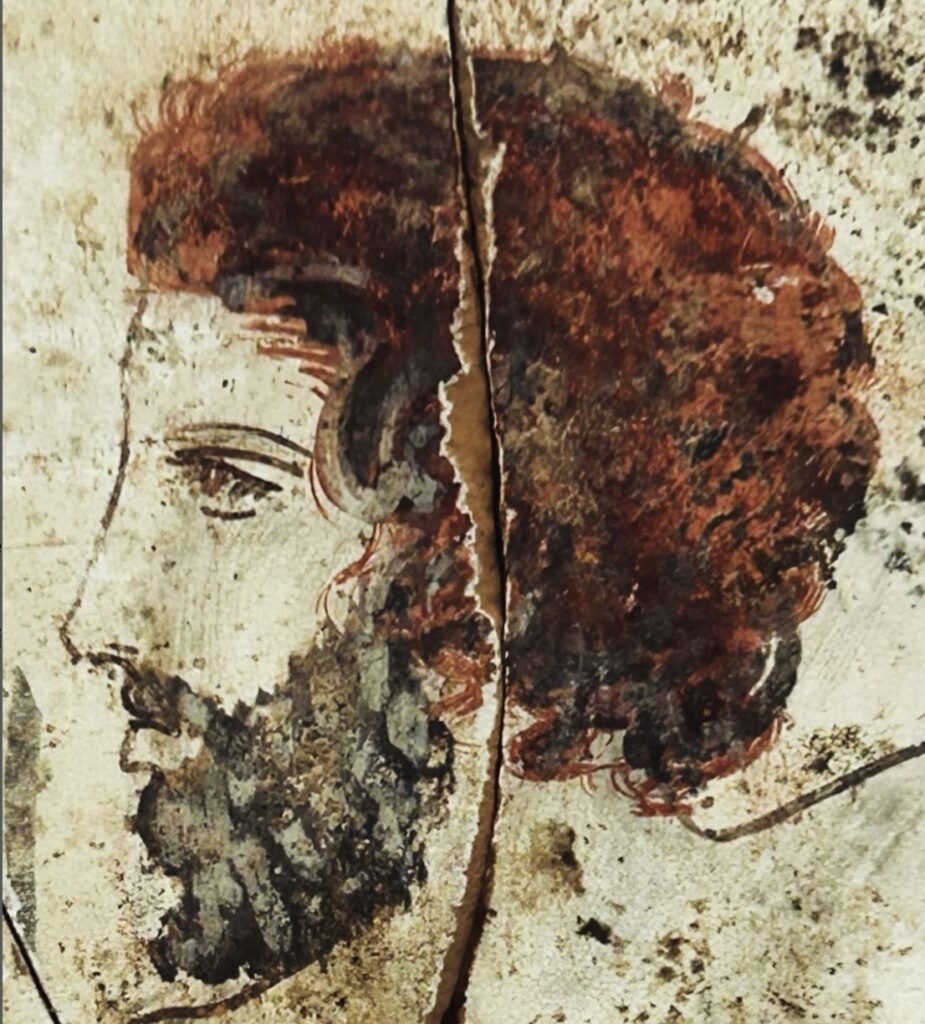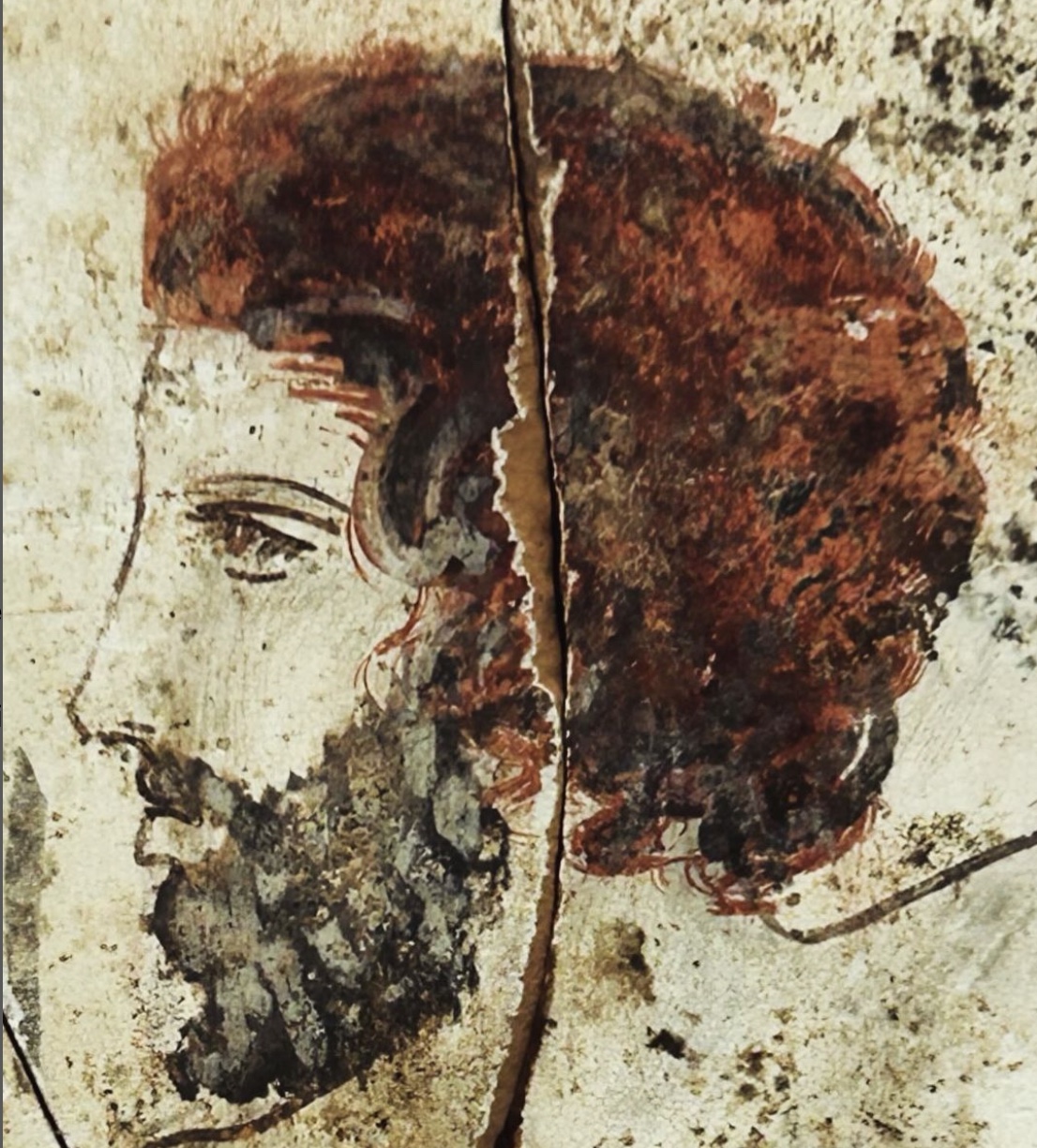If you don’t like people and do like pots (specifically white ground lekythoi), head to the gorgeous and distressingly under-visited Kerameikos Museum.
‘Kerameikos’ refers to Athens’ potters quarter just to the northwest of the city. Refining and firing mass quantities of clay was stinky, smoky business best relegated just outside the city walls. The name came to encompass the sprawling cemetery that evolves in the same extra-urban sector, where the Sacred Way originated and over the centuries was monumentalized with various types of markers and grave goods.

Lekythoi were slender vases for pouring oil during funeral rites, with delicate white slip and subdued (yet colorful) scenes becoming hugely popular in Athens during the mid 5th century B.C. And it stands to reason that a great many of them were deposited in the old cemetery, later to be excavated by the German team there.
This is a wonderfully evocative closeup of one – the seated man (the deceased or a mournful visitor to the tomb – there is often an ambiguity) rendered with quick outline and feather light brushstrokes. His pouting bottom lip seems weighed down by grief, and the haze of his hair and beard seem to heighten his melancholy.




